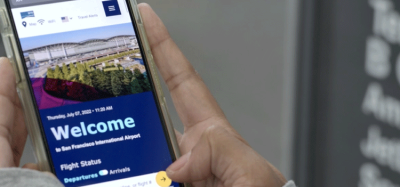What’s next with NEXTT – now and in the future?
- Like
- Digg
- Del
- Tumblr
- VKontakte
- Buffer
- Love This
- Odnoklassniki
- Meneame
- Blogger
- Amazon
- Yahoo Mail
- Gmail
- AOL
- Newsvine
- HackerNews
- Evernote
- MySpace
- Mail.ru
- Viadeo
- Line
- Comments
- Yummly
- SMS
- Viber
- Telegram
- Subscribe
- Skype
- Facebook Messenger
- Kakao
- LiveJournal
- Yammer
- Edgar
- Fintel
- Mix
- Instapaper
- Copy Link
Posted: 13 May 2021 | NEXTT Vision (IATA & ACI) | No comments yet
For NEXTT’s third webinar with International Airport Review, over 800 participants registered to hear from representatives from Bangalore International Airport, Cincinnati / Northern Kentucky International Airport, Air Canada, ACI World and IATA who shared their strategic vision and latest key initiatives they have been working on to be ready for a post-pandemic future.


The previous NEXTT webinars held in October 2020 and February 2021 reconfirmed the validity of, and the need for, the concepts of NEXTT (New Experience in Travel Technologies) and looked further at how the industry is moving from concepts to implementation of ideas and taking the advantage of the new imperative for healthy travel to accelerate innovations and process changes.
For our third webinar entitled ‘What’s next with NEXTT – now and in the future’, more than 800 participants registered to hear from representatives from Bangalore International Airport, Cincinnati / Northern Kentucky International Airport, Air Canada, Airports Council International (ACI) World and the International Air Transport Association (IATA) who shared their strategic vision and latest key initiatives they have been working on to be ready for a post-pandemic future.
Although the NEXTT vision – a joint ACI and IATA initiative – remains a long-term focus on the future of travel, the panellists explained that many of the concepts being trialled and implemented today in the passenger, aircraft, baggage and cargo journeys take advantage of the new imperative for healthy travel and provide needed reassurance and customer confidence.
Webinar poll results:
What areas should be more strongly emphasized in the NEXTT vision?
1) Touchless travel and healthy processes (50 per cent)
2) Environmental sustainability (25 per cent)
3) Ramp and airside operations (17 per cent)
The webinar started off with Antoine Rostworowski, Senior Vice President, Programmes and Commercial Services at ACI World, who explained that the air travel industry is on a journey to recovery and that despite going through the worst crisis in its history, that aviation will rebound. He emphasised that the five megatrends identified by PwC in 2016 (1) are not only still valid, but also accelerating due to COVID-19. Antoine illustrated further that NEXTT is on a journey, from vision to adoption, partnering with some leading airports to validate ideas and explore potential solutions to solve today’s challenges. Finally, he ended his presentation by suggesting that i) sharing best practices more systematically, ii) making tools more widely available to learn how innovation happens in successful organisations, iii) providing international visibility on trends and on who is doing what, and iv) building relationships and contacts are four elements needed to be put forward to in order to turn the NEXTT vision into reality.
The second webinar speaker, Hari Marar, Managing Director & CEO, Bangalore International Airport started his presentation outlining the relevance of Bangalore as the technology capital and the start-up hub of India. Up to two years prior to the COVID-19 pandemic, Bangalore was one of the fastest growing airports in the world with a total passenger count of 33 million. Hari emphasised that airports are more than infrastructure providers, but are also today truly business of businesses, offering wonderful experiences and providing an array of services to customers. Taking into account the rate that technologies are changing around us, Bangalore Airport was able to undertake three major innovation programs to redefine the future of travel, mainly:
- digital transformation (from bricks to bytes),
- end to end biometric based single token journey (Digi Yatra), and
- multi-modal transportation hub supporting sustainable growth of the city and the nation.
Hari was followed by Brian Cobb, Chief Innovation Officer, Cincinnati / Northern Kentucky International Airport. Taking advantage of the airport’s cargo hub rapidly developing with Amazon Prime Air and DHL air cargo, CVG innovation ecosystem is primarily connected with non-industry representatives and start-ups. Brian explained that they saw a need very quickly to liaise with university partners and to be connected with partners from other industries who are watching aviation closely (such as the sports and entertainment world) who wanted to learn about the aviation recovery strategies and solutions. Brian also highlighted the fact that innovation may be considered as another form of change management, improving the product of what we used yesterday and delivering unique experiences for the customers.
The webinar next speaker, Jonathan Parkinson, Senior IT Advisor for Air Canada, spoke about air cargo, what has changed in this field and how it has been accelerated this year with the pandemic. Jonathan explained that there is a world of opportunities in the cargo area and information sharing between all stakeholders is key. The challenge is how to get everyone on-board, and he highlighted the importance of the IATA ONE record initiative. Furthermore, he explained how the use of hackathons and competitions are another way to solve industry problem and to accelerate adoption of pilots and trials.
Last but not least, Pierre Charbonneau, Director, Passenger and Facilitation, IATA touched on how to manage change and turn innovation ideas into action. The original drivers of the NEXTT vision were to improve the overall customer experience and face the challenges of the travel in the future with estimated double digit passenger number increases. Now, in the second year of the pandemic, he highlighted that leveraging the technologies and the engagement with stakeholders considering difficult financial situation is essential. Pierre gave examples of trends already being accelerated in a fast pace (such as the biometric journey, dynamic management of passenger flows, mobile and self-service technology, hygiene measures). Finally, Pierre stated that customers are eager to fly again, but still need reassurance and know that proper health processes are been maintained and travel is enjoyed in a seamless way.
Taking into account the considerations of our speakers and the audience feedback, ACI and IATA will work on raising awareness of innovative concepts implemented and trialled in the upcoming months to continue the journey together. Ideas such as creating a dashboard to demonstrate what is happening around the world, facilitate exchanges between key stakeholders to share lessons learned, facilitating matchmaking between industry suppliers and start-ups with airports and airlines that have needs and concepts to implement, while supporting the development of business cases to help innovators make successful pitches to decision-makers.
We invite you to follow us and to join our discussion on the LinkedIn Group to get familiar with the concepts, uses cases and the NEXTT vision.
[1] Demographic and social change, shifts in global economic power, rapid urbanization, climate change and resource scarcity and technological breakthroughs
Related topics
Related airports
Bangalore International Airport (BLR), Cincinnati/Northern Kentucky International Airport (CVG)
Related airlines
Related organisations
Airports Council International (ACI World), International Air Transport Association (IATA)
Related people
Antoine Rostworowski, Brian Cobb, Hari Marar, Jonathan Parkinson, Pierre Charbonneau


















